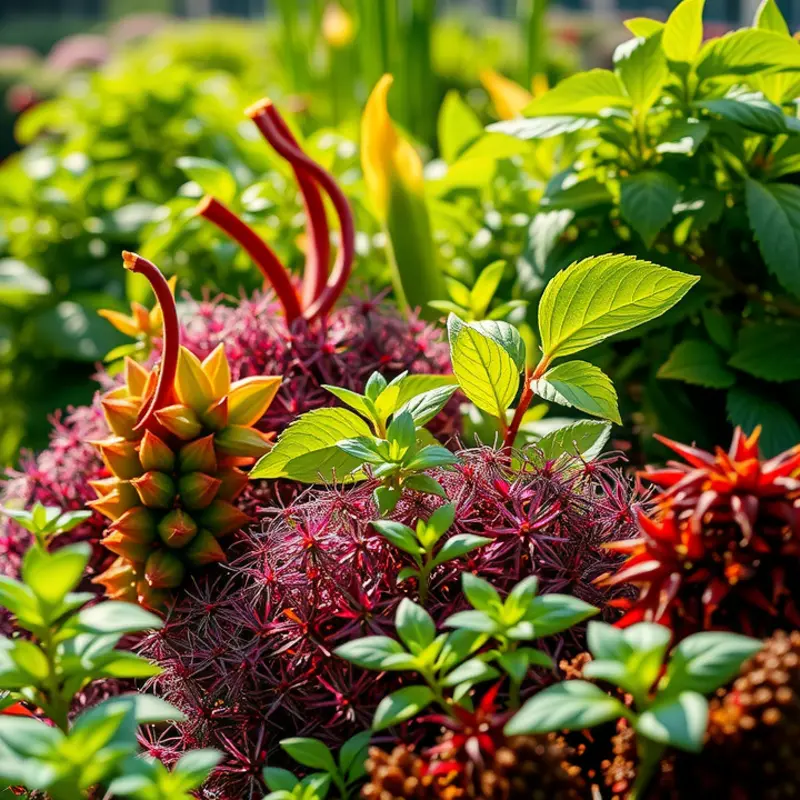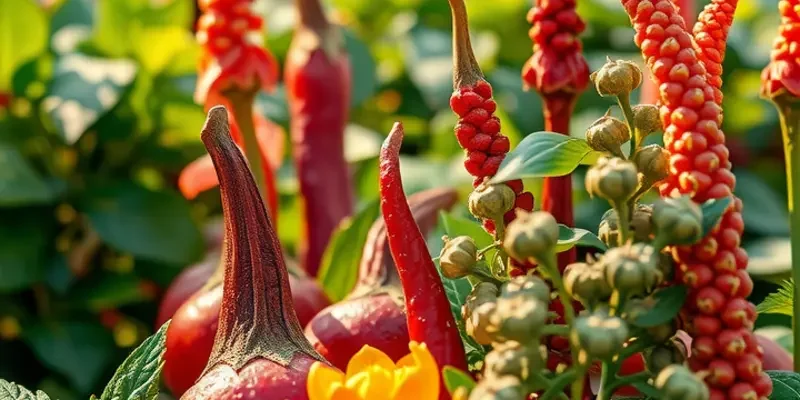Culinary fusion, the art of combining diverse food traditions, thrives at the borders of every culture. As people move and interact, so do their culinary practices, leading to remarkable dishes that embody the spirit of integration. From the spices of India mingling with the simplicity of Italian cuisine to the vibrant street food of Southeast Asia, fusion cuisine tells a story of shared history, adaptation, and creativity. Discover the vibrant flavors that arise when boundaries blur and kitchens become laboratories of innovation.
The Spice Route: Tracing Flavors Across Continents

On a quest to unveil culinary fusion, one must explore the storied paths of the spice trade. This ancient network not only brought fragrant spices across seas and deserts but also seeded a colorful tapestry of flavors on distant shores. The Middle East, historically a hub of aromatic trade, fosters a perfect starting point for fusion exploration.
Sumac, za’atar, and harissa navigate from bustling Middle Eastern bazaars to the olive groves and seaside kitchens of the Mediterranean. Imagine za’atar sprinkled onto flatbreads, marrying perfectly with Greek olive oil, or harissa stirring red-hot passion into a classic Italian risotto. This brilliant blend transcends mundane borders, demonstrating how spices expand culinary horizons.
Moving eastward, the aromatic richness of cardamom and saffron weaves its way into India’s vibrant curries. These spices did not linger long within regional confines. They soon found homes in the kitchens of Morocco with tagines simmering in their scented embrace. The fusion here is not mere coincidence; it’s a fragrant handshake across cultures eternally linked by trade.
Fresh herbs, often caught between sun-dappled Asian fields and verdant Latin American gardens, bring a fresh perspective to fusion cuisine. Thai basil, with its sweet anise notes, rejuvenates a simple Mexican salsa, compelling flavors to dance. Meanwhile, cilantro, cherished in both Vietnamese pho and Mexican guacamole, symbolizes how taste transcends continents.
Asian influences also ripple through Latin kitchens in other ways. Soy sauce becomes an unexpected ally to Mexican marinades, deepening umami within spice-laden dishes like pollo asado. This unification highlights the shared appetite for bold flavors that characterizes both cuisines.
Fusion thrives not only in the union of ingredients but in the exchange of techniques. Japanese tempura, light and airy, adapts to Southern cooking by embracing the decadence of fried green tomatoes. In turn, the idea of a Southern barbecue collides with Korean spices, creating bulgogi sliders that tantalize global palates.
In these tasting journeys, culinary adventurers often uncover more than flavors; they uncover stories, history, and human connection. Cultures intertwining on the plate mirror the friendships and family ties binding global community. Such exchanges highlight mutual understanding and creativity.
For those looking to experiment with their own fusion creations, tips on flavor infusion basics can offer invaluable guidance. Embracing new flavors through culinary fusion not only delights the palate but enriches the soul.
Through the spice route, flavors evolve, unite, and create new gastronomic landscapes. These dishes whisper of the past but speak confidently of a shared future, inviting us to partake in a global feast.
Plate to Palate: Dishes That Bring Cultures Together

In the realm of culinary fusion, dishes that seamlessly blend diverse traditions ignite a sensory celebration. Consider the sushi burrito—a simple yet ingenious creation combining the heritage of Japan with the culinary convenience of Mexico. Imagine tightly wrapped rice and fresh fish encased in a snug seaweed sheet, then bundled with vibrant Latin spices and accessible to enjoy on the run. This union offers not just a meal, but an experience—a moment where two worlds meet to create a novel narrative.
The sushi burrito embodies the spirit of migration and adaptation seen throughout global culinary landscapes. Immigrant communities, as they settle in new lands, weave their traditional recipes with local ingredients and techniques, birthing entirely new dishes. The Indian pav bhaji, for example, emerged from Mumbai street vendors gathering market leftovers. They married them with Portuguese influences to create a vegetarian marvel that resonates deeply with the city’s eclectic soul.
Similarly, Korean tacos have become a fixture on the streets of American cities, particularly in areas with vibrant Asian populations. Here, the piquant flavors of Korean barbecue meld with the familiar structure and convenience of a taco. Such dishes are emblematic of a broader trend where food acts as a cultural ambassador, bridging gaps between diverse peoples.
Throughout history, trade routes and exploration have fueled this rich exchange of flavors. The spice trade between Asia and Europe transformed bland medieval dishes into a feast of flavor. Today, we benefit from a world where distance hardly impedes the diffusion of culinary ideas. Community influence plays a crucial role in this process, as neighborhoods evolve to include diverse ethnic enclaves. These enclaves often introduce hybrid dishes that capture the essence of multiple traditions, yet are adaptable to local palates.
A visit to any global city might offer a plate where fragrant Ethiopian injera shares space with doro wat-inspired tacos, which might feature a corn tortilla cradling spicy, berbere-seasoned chicken. It’s a testament to culinary creativity and the power of shared heritage.
Beyond community integration, technology further expands the palate’s possibilities. Rapid transportation and advanced cooking techniques enable chefs to experiment with ingredients that were once exotic. Flavor infusion—either through marinating, grilling, or braising—enhances these creations, accentuating the greatest attributes of each contributing culture.
Indeed, as more people embrace mindful eating, recognizing the profound impact of food on both body and mind, the desire for innovative and healthful recipes grows. Culinary hybrids are an inviting way to explore these interests while honoring both the past and the present. With this in mind, it’s clear why dishes like the sushi burrito continue to captivate. They represent a crossroads of flavors, a celebration of diversity and resilience.
For those interested in enhancing their culinary creativity, mastering basics such as flavor infusion can unlock new realms of fusion cooking. Consider this guide on flavor infusion basics to bolster your culinary adventure.
Final words
Culinary fusion represents more than just unique ingredients on a plate; it embodies the stories, traditions, and innovations that cultures share over time. In celebrating fusion cuisine, we honor the journeys of countless individuals who brought their culinary heritage to new lands, transforming their traditional recipes into something extraordinary. This ongoing exchange of flavors and techniques is a testament to the creativity of human expression. As you embark on your own culinary adventures, consider how your favorite dishes may be influenced by a tapestry of cultures mingling within them. Every meal you enjoy has the potential to tell a story as rich as the ingredients that fill your plate.








